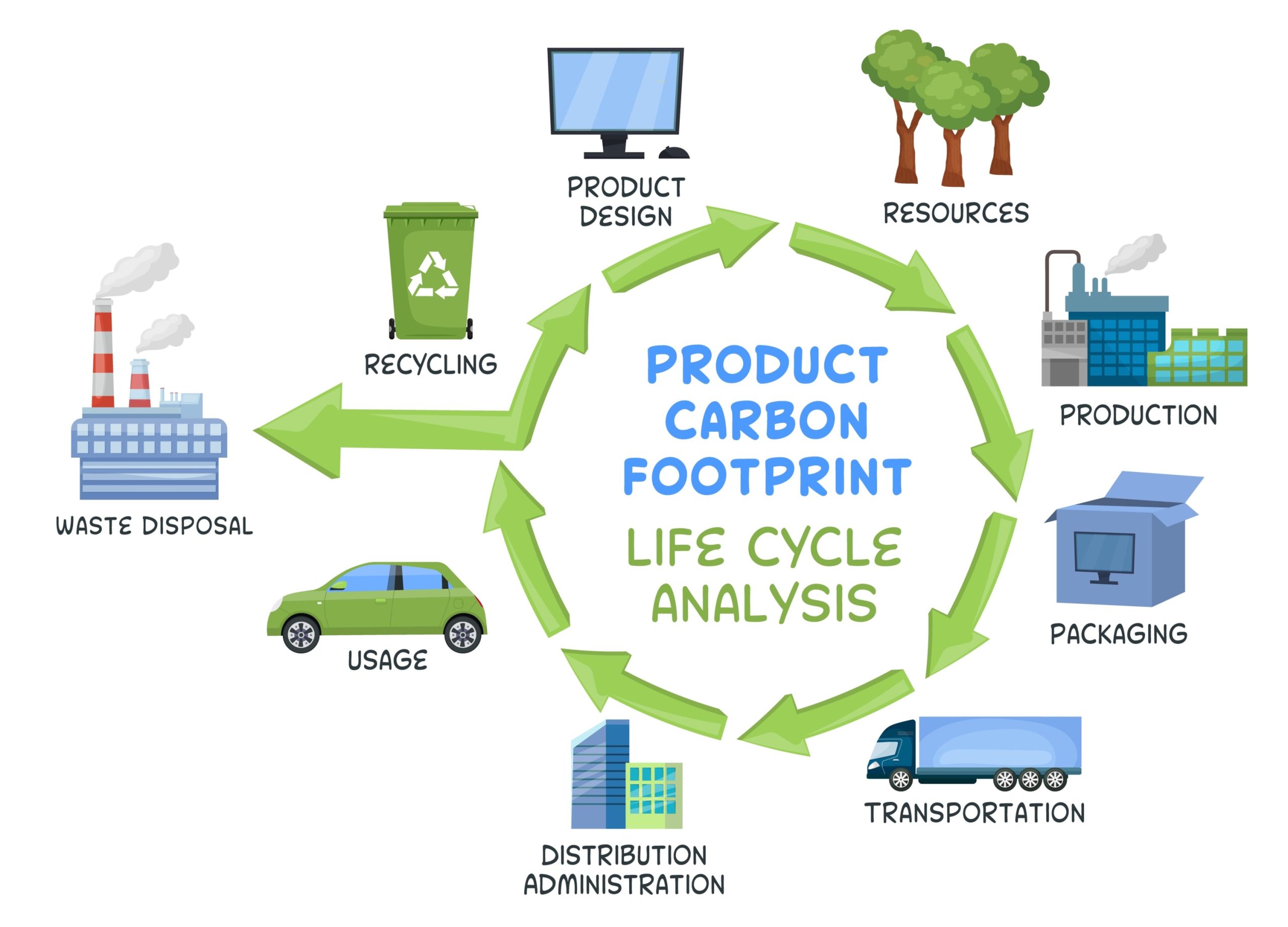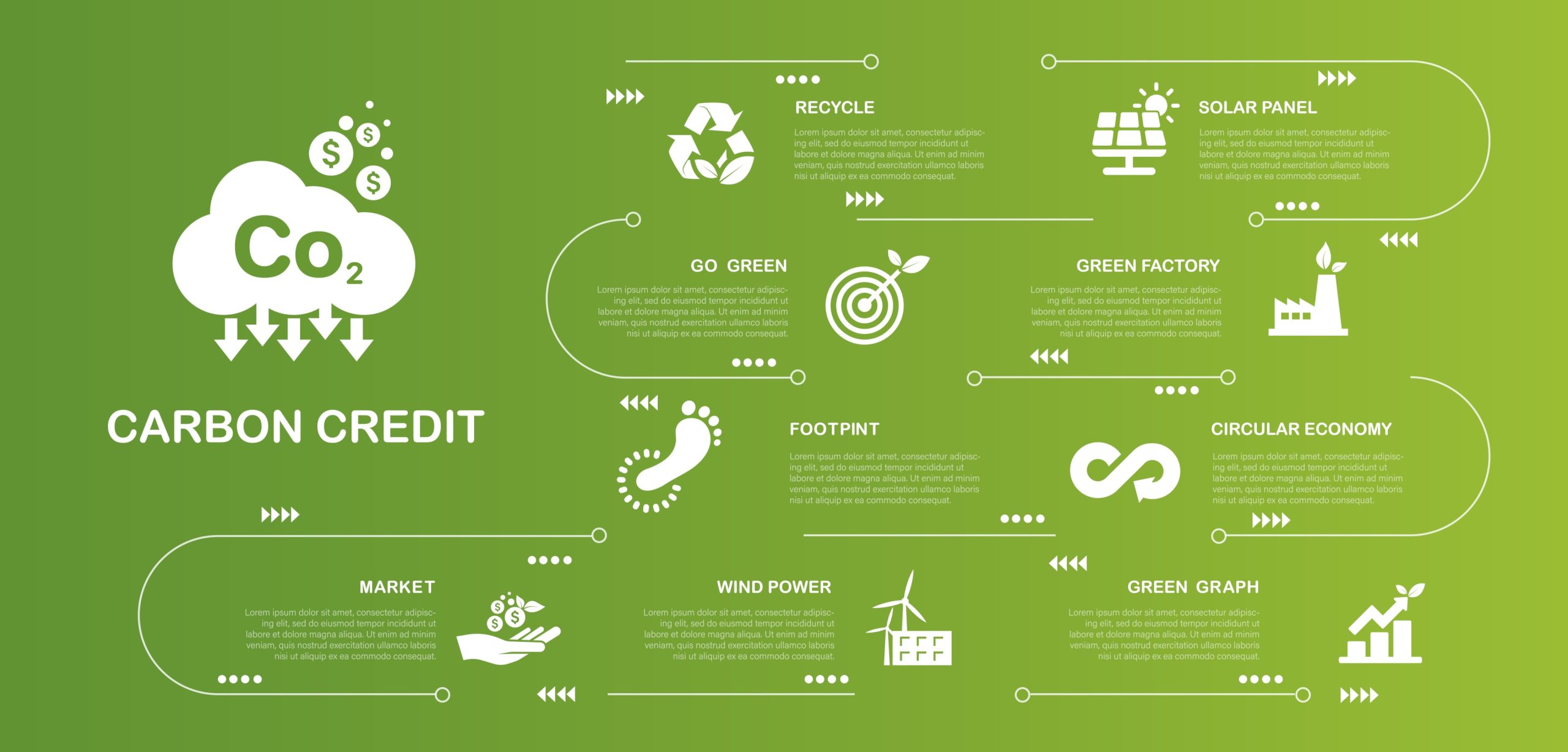In the pursuit of a sustainable future, understanding the carbon footprint of products is becoming increasingly crucial for both consumers and businesses. The product carbon footprint (PCF) measures the total greenhouse gas emissions generated throughout a product’s life cycle. This comprehensive guide will delve into how to calculate the carbon footprint of a product, its importance, and its applications in various industries.

What is a Product Carbon Footprint?
A product carbon footprint (PCF) is a comprehensive assessment of all greenhouse gas emissions associated with a product throughout its life cycle. This includes all emissions resulting from raw material extraction, manufacturing, transportation, usage, and disposal. The PCF is typically expressed in carbon dioxide equivalents (CO₂e), which standardizes the impact of different greenhouse gases based on their global warming potential.
How to Calculate the Carbon Footprint of a Product
Calculating the carbon footprint of products is a detailed process that involves several critical steps. Here is a comprehensive guide on how to calculate a product carbon footprint:
Step 1: Define the Goal and Scope
Before calculating the product carbon footprint, it’s crucial to define the goal and scope of the assessment. Are you trying to compare your product’s carbon footprint with that of a competitor, identify hotspots in the supply chain, or meet regulatory requirements? The answers to these questions will guide the depth and breadth of your analysis. Clearly defining your objectives will ensure that the assessment is both relevant and comprehensive.
Step 2: Set the System Boundary
The system boundary defines which stages of the product’s life cycle are included in the product carbon footprint calculation. There are two primary types of system boundaries:
Cradle-to-Grave: This approach includes all stages from raw material acquisition and extraction to the end-of-life disposal of the product. It’s the most comprehensive method, suitable for final products. This method accounts for the entire lifespan of a product, providing a complete picture of its environmental impact.
Cradle-to-Gate: This method includes all stages of production chain up to the point where the product leaves the manufacturer’s factory gate. It is often used for intermediate products where the final use is not known. This boundary focuses on the production phase, excluding the downstream impacts such as usage and disposal.
Step 3: Data Collection

Collecting accurate data is critical for calculating the product carbon footprint. This involves gathering information on the production processes, raw material inputs, energy consumption, and emissions factors. The data collection phase is crucial for ensuring the accuracy and reliability of the product carbon footprint. Here are the types of data needed:
- Primary Data: Directly obtained from the production processes, including specific measurements of energy use, raw materials consumed, and emissions produced. This data is usually more accurate and specific to the product being assessed.
- Secondary Data: When primary data is not available, secondary data from databases or literature can be used. This includes industry averages, default emissions factors, and other general estimates. While less precise, secondary data can still provide valuable insights.
Step 4: Emissions Calculation
Calculate the emissions using the formula:
Emissions=Activity Data×Emissions Factortext{Emissions} = text{Activity Data} times text{Emissions Factor}Emissions=Activity Data×Emissions Factor
For instance, the emissions from fuel consumption can be calculated by multiplying the amount of fuel used by its corresponding emissions factor. This step involves detailed calculations for each phase of the product’s life cycle:
- Raw Material Extraction: Calculate the emissions from extracting and processing the raw materials used in the product.
- Manufacturing: Assess the emissions generated during the manufacturing process, including energy consumption and waste generation.
- Transportation: Include the emissions from transporting raw materials to the factory and finished products to the market.
- Usage: For cradle-to-grave assessments, calculate the emissions during the product’s use phase.
- Disposal: Include the emissions from the end-of-life phase, such as recycling or landfill.
Summing the emissions from all activities gives the total product carbon footprint. This total is expressed in carbon dioxide equivalents (CO₂e) to standardize the impact of different greenhouse gases based on their global warming potential.
Implications of Product Carbon Footprints
Reporting Emissions
Product carbon footprints are crucial for reporting emissions to stakeholders, including customers, regulators, and investors. They provide transparency about the environmental impact of products and can be used in sustainability reports and environmental product declarations.
Reducing Emissions
Identifying the carbon hotspots in a product’s life cycle allows companies to target and reduce emissions effectively. For example, improving energy efficiency in manufacturing or sourcing materials with lower carbon footprints for packaging can significantly reduce overall emissions.
Competitive Edge
Companies with lower-carbon products can gain a competitive edge in the market. As customers and businesses increasingly prefer sustainable products, showcasing a lower product carbon footprint can enhance a company’ brand reputation and marketability.
Importance of Product Carbon Footprints
Environmental Impact
Understanding the carbon footprint of products is crucial for addressing the broader issue of climate change. By identifying and mitigating the emissions associated with products, companies can significantly contribute to global efforts to reduce greenhouse gas emissions.
The product carbon footprint provides a detailed insight into how much carbon dioxide and other greenhouse gases are released throughout the life cycle of a product, from the extraction of raw materials to manufacturing, transportation, usage, and waste disposal. This comprehensive understanding allows businesses to implement targeted strategies to reduce their carbon footprints, thereby playing a critical role in combating global warming.
Regulatory Compliance

Many countries are introducing stringent regulations that mandate businesses to disclose the carbon footprints of their products. This regulatory landscape ensures that businesses operate transparently and align their practices with global sustainability goals.
Complying with these regulations not only helps avoid legal penalties but also positions companies as responsible and forward-thinking entities committed to environmental stewardship. Understanding and reporting the product carbon footprint is essential for meeting these regulatory requirements. Tools like a carbon footprint calculator can aid businesses in accurately determining their product carbon footprints, ensuring compliance and demonstrating a commitment to reducing their carbon emissions.
Consumer Demand
Consumers are increasingly making purchasing decisions based on the environmental impact of products. They seek out products with lower carbon footprints and prefer brands that transparently disclose their product carbon footprints. Providing clear and verifiable product carbon footprints meets this growing consumer demand, building trust and enhancing brand loyalty.
Consumers want to know that the products they buy are not contributing excessively to greenhouse gas emissions. By offering products with reduced carbon footprints, businesses can tap into the market of environmentally conscious consumers. This transparency not only strengthens consumer trust but also positions the brand as a leader in sustainability.
Challenges in Calculating Product Carbon Footprints
Data Quality and Availability
Obtaining high-quality, accurate data across the entire supply chain can be challenging. Companies often rely on estimates or secondary data, which can affect the accuracy of the product carbon footprint.
Complex Supply Chains
Products with complex supply chains involve numerous suppliers and production processes, making it difficult to track all sources of emissions accurately.
Standardization
There is a lack of standardization in how product carbon footprints are calculated, which can lead to inconsistencies and difficulties in comparing results across different products or companies.
Reducing the Carbon Footprint of Products
Sustainable Materials
Using sustainable and recycled materials can significantly reduce the carbon footprint of products. For instance, replacing traditional materials with those that have a lower environmental impact during extraction and processing can make a substantial difference in products carbon footprint.
Energy Efficiency
Improving energy efficiency in manufacturing processes reduces the amount of energy consumed, thereby lowering the associated emissions. Implementing energy-efficient technologies same materials and practices is a key strategy in reducing the PCF.
Supply Chain Optimization

Optimizing the supply chain by sourcing materials locally or from suppliers with lower emissions can reduce the overall product carbon footprint. Additionally, improving logistics and transport and reducing transportation distances can further minimize emissions.
Product Design
Designing products with a focus on sustainability, such as longer lifespans, ease of recycling, and lower energy consumption during use, can help reduce their household’s carbon footprint over their entire life cycle.
Understanding and calculating the carbon footprint of products is essential for companies committed to sustainability and reducing their environmental impact. By following a systematic approach to calculate and analyze PCFs, businesses can identify carbon hotspots, reduce emissions, and meet the growing demand for sustainable products.
Investing in accurate PCF calculations not only helps in regulatory compliance but also provides manufacturers a competitive edge in the market. As consumers become more environmentally conscious, showcasing a commitment to reducing the carbon footprint of products can enhance brand reputation and drive business growth.

One Response